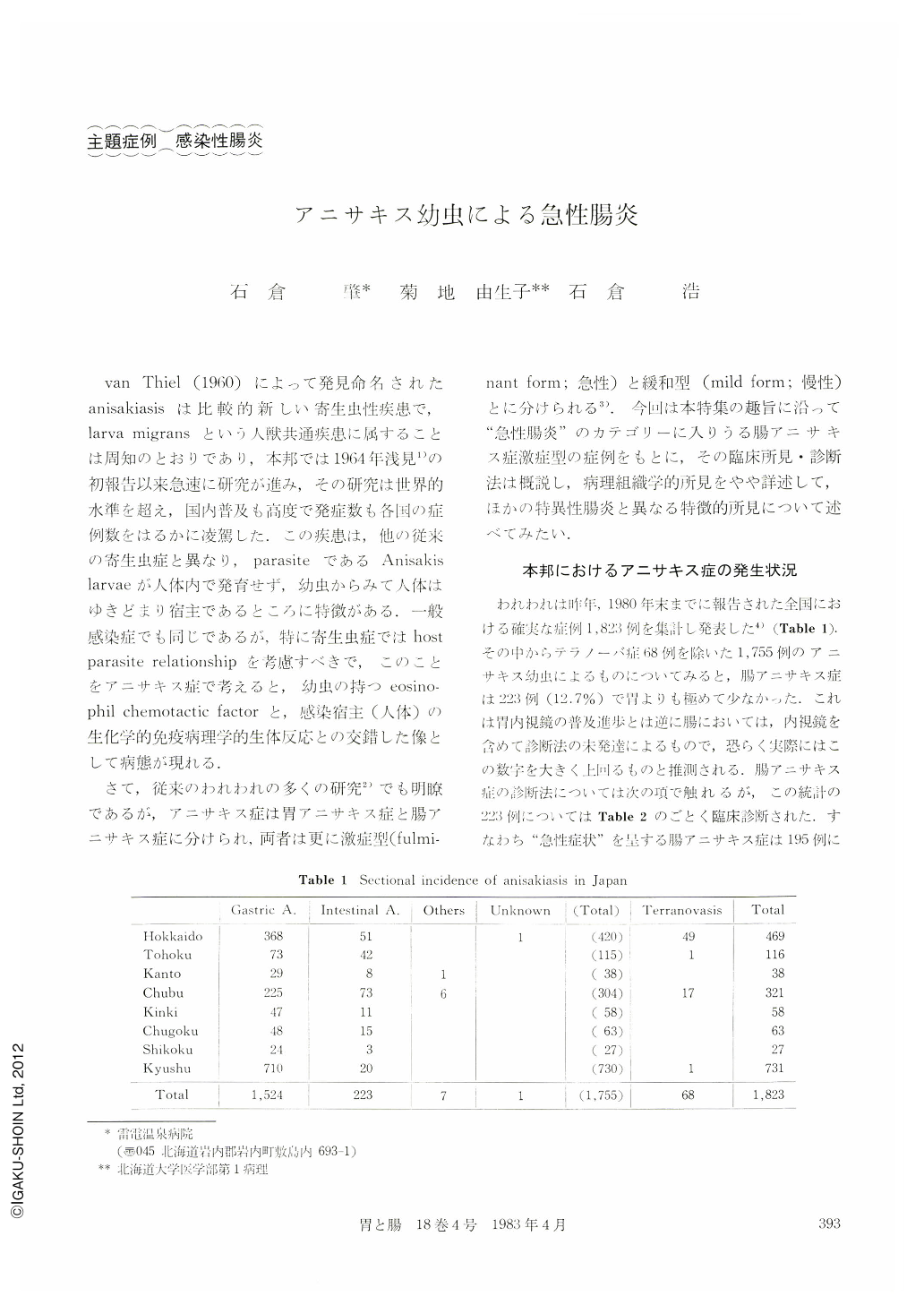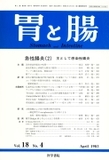Japanese
English
- 有料閲覧
- Abstract 文献概要
- 1ページ目 Look Inside
- サイト内被引用 Cited by
van Thiel(1960)によって発見命名されたanisakiasisは比較的新しい寄生虫性疾患で,larva migransという人獣共通疾患に属することは周知のとおりであり,本邦では1964年浅見の初報告以来急速に研究が進み,その研究は世界的水準を超え,国内普及も高度で発症数も各国の症例数をはるかに凌駕した.この疾患は,他の従来の寄生虫症と異なり,parasiteであるAnisakislarvaeが人体内で発育せず,幼虫からみて人体はゆきどまり宿主であるところに特徴がある.一般感染症でも同じであるが,特に寄生虫症ではhost parasite relationshipを考慮すべきで,このことをアニサキス症で考えると,幼虫の持つeosinophil chemotactic factorと,感染宿主(人体)の生化学的免疫病理学的生体反応との交錯した像として病態が現れる.
さて,従来のわれわれの多くの研究でも明瞭であるが,アニサキス症は胃アニサキス症と腸アニサキス症に分けられ,両者は更に激症型(fulminant form;急性)と緩和型(mild form;慢性)とに分けられる.今回は本特集の趣旨に沿って“急性腸炎”のカテゴリーに入りうる腸アニサキス症激症型の症例をもとに,その臨床所見・診断法は概説し,病理組織学的所見をやや詳述して,ほかの特異性腸炎と異なる特徴的所見について述べてみたい.
Anisakiasis is a disease caused by the migration of the third stage larvae of Anisakis or other related nematoda. This disease is divided into two types; gastric and intestinal type, each of which is further separated into fulminant (acute) and mild (chronic) form. It is known that the pathogenesis and clinical features differ among these types and forms.
Anisakiasis was first reported by van Thiel in Netherlands. In Japan, Asami reported the first case in 1964. Since then, up to 1981, as many as 980 papers excluding ours have been published concerning this disease. In reviewing 1,823 cases of Japanese anisakiasis, 1,524 cases fell into gastric type and 223 into intestinal type, and the latter was predominantly of fulminant form.
Preponderance of the gastric type seems to be explained by the fact that gastric type is easy to diagnose by using endoscope, while intestinal one is difficult to diagnose because it is not routine to use endoscope in the small intestine.
Acute intestinal anisakiasis is characterized by acute ileitic condition, and most cases are found at emergency operation. Histological study shows that its acuteness is derived from the antigenecity of the parasite itself rather than eosinophil chemotactic factor released from it. So we conclude that this form represents re-infection of the parasite.

Copyright © 1983, Igaku-Shoin Ltd. All rights reserved.


